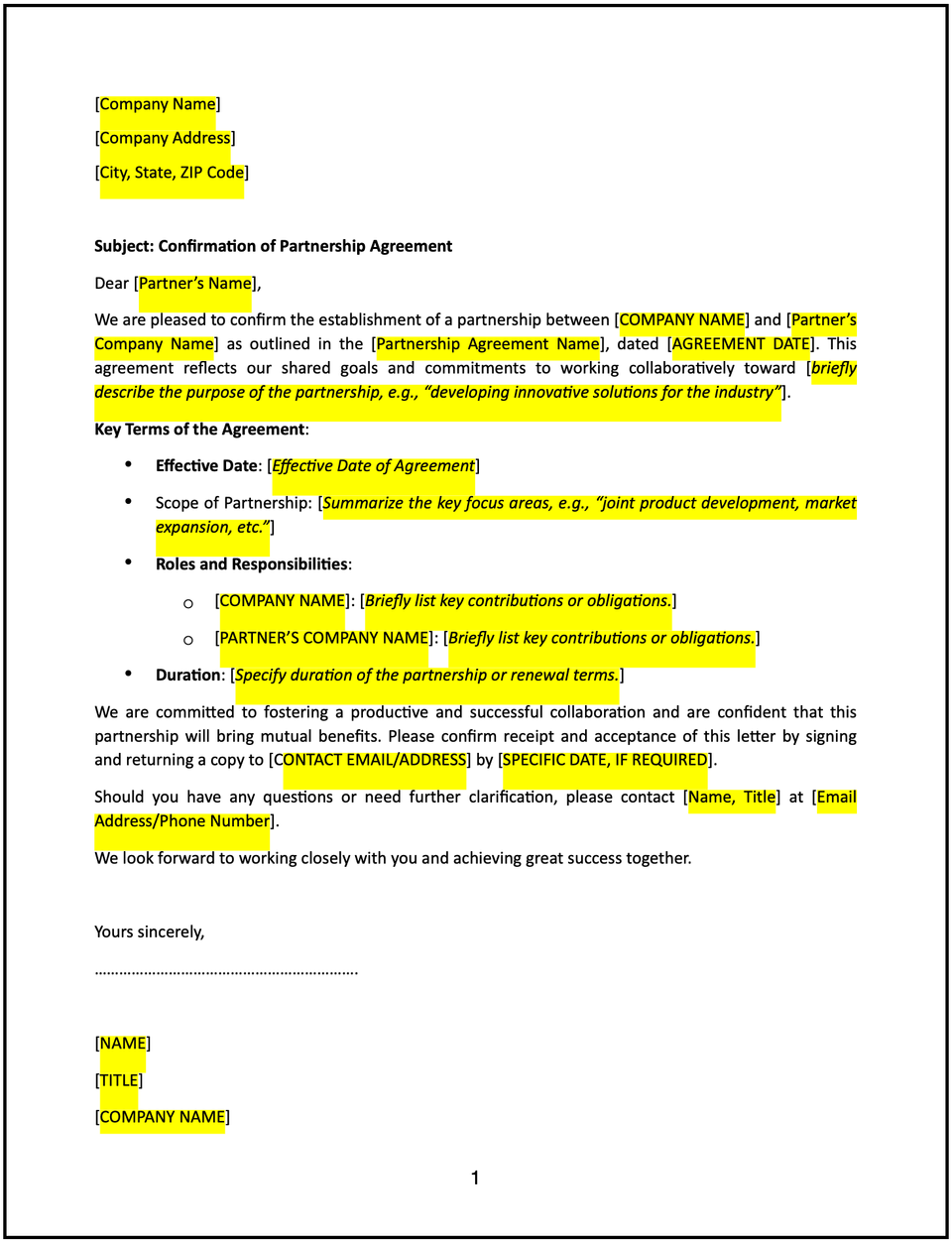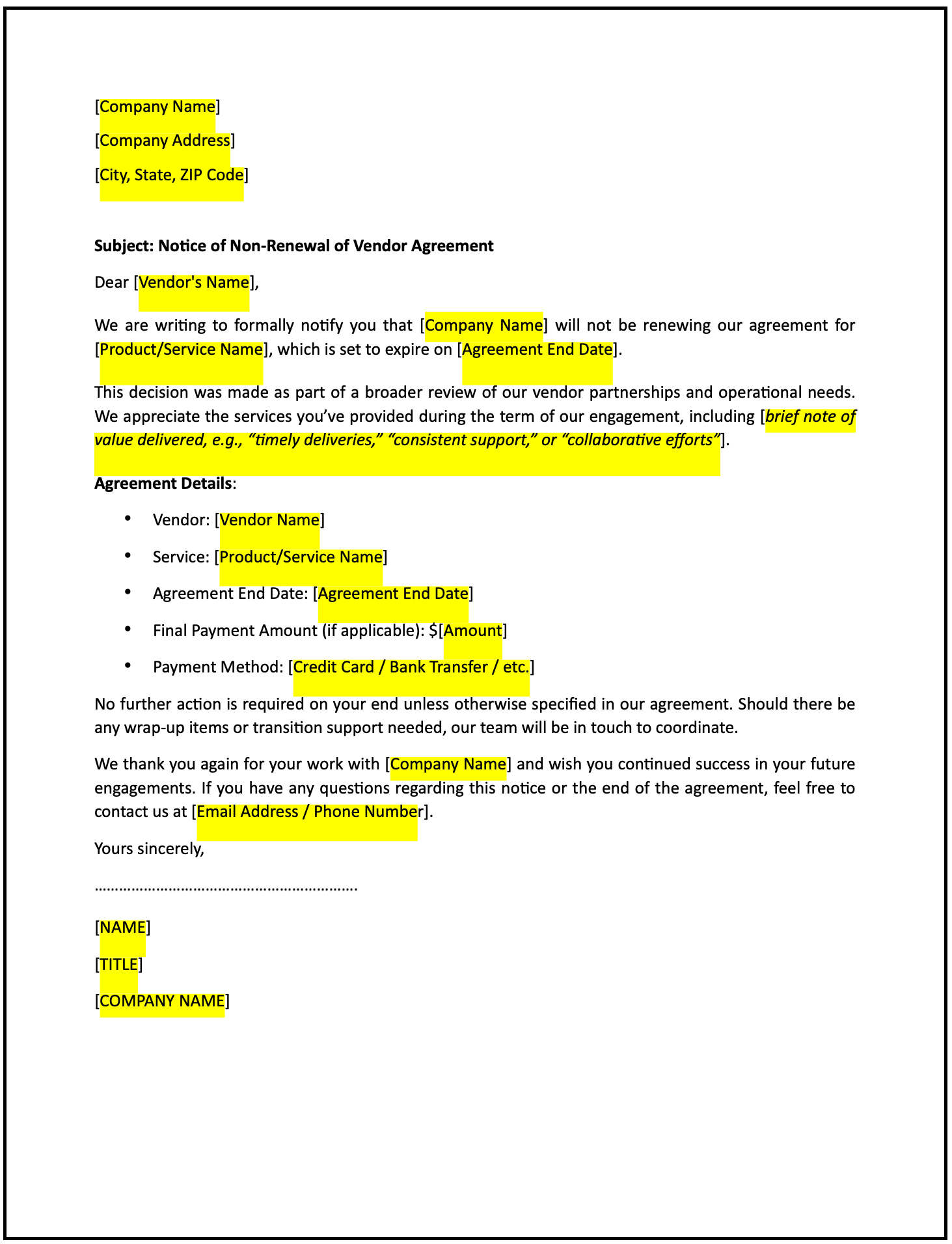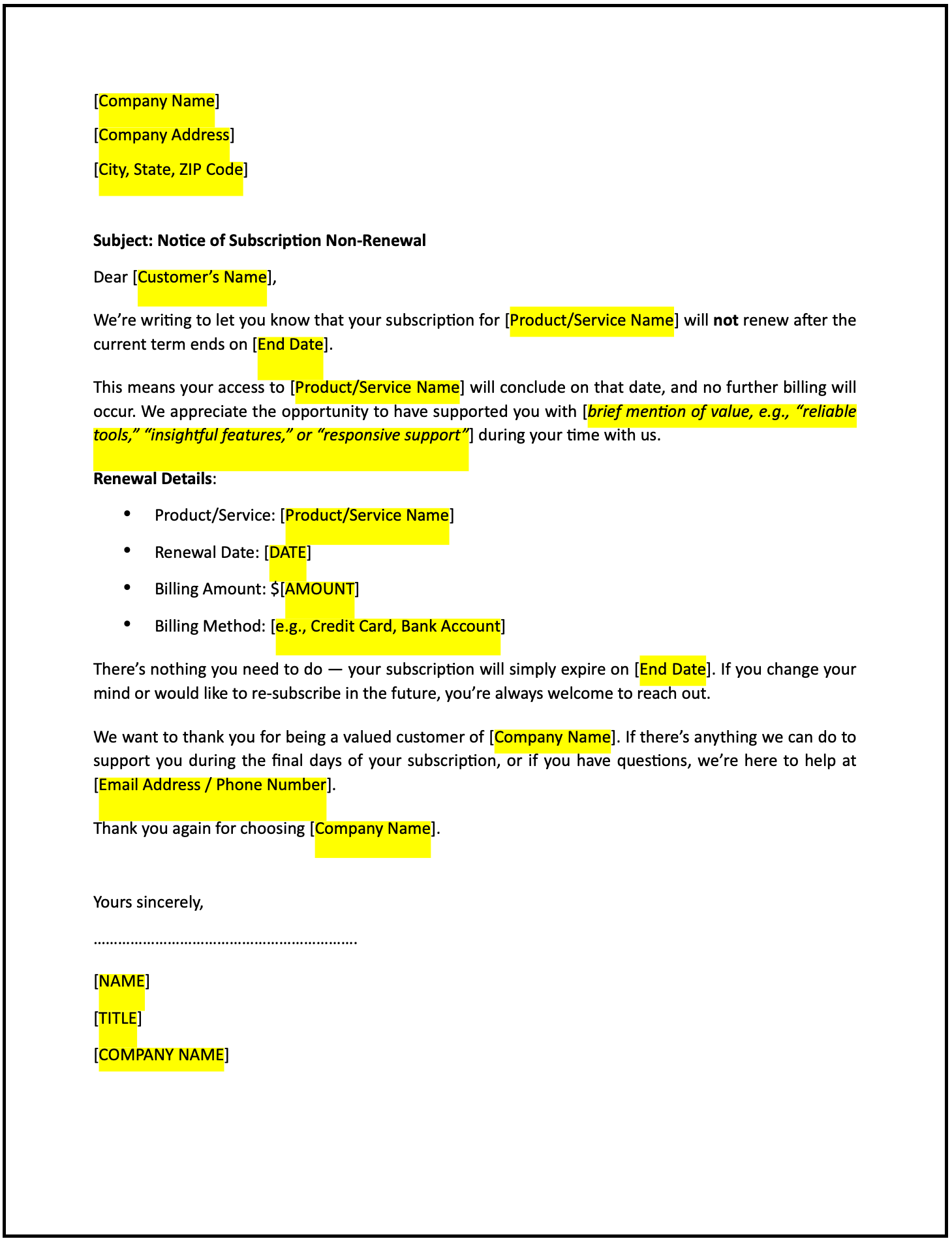Letter confirming partnership agreement: Free template

Letter confirming partnership agreement
A letter confirming a partnership agreement is a formal communication used to document the mutual understanding and commitments of both parties in a partnership. This letter highlights the terms of the agreement, shared objectives, and responsibilities, fostering clarity and alignment.
How to use this letter confirming partnership agreement
- Open with an introduction: Address the recipient respectfully and reference the partnership discussions or agreement previously made.
- Confirm the partnership: Clearly state that the partnership has been finalized and outline the key terms of the agreement.
- Highlight shared objectives: Briefly describe the goals of the partnership and how both parties will work together to achieve them.
- Outline roles and responsibilities: Specify the roles, responsibilities, and expectations for each party to ensure accountability.
- Include key terms: Highlight significant details such as timelines, deliverables, financial arrangements, or any other critical terms.
- Reiterate mutual benefits: Emphasize how the partnership will create value and contribute to the success of both parties.
- Request acknowledgment: Invite the recipient to confirm their understanding and agreement with the outlined terms or provide feedback.
- Maintain a professional tone: Ensure the letter is clear, respectful, and focused on collaboration.
- Provide contact information: Include details for the recipient to reach out with questions or for further discussion.
Benefits of using a letter confirming partnership agreement
This letter ensures a structured and professional way to document partnership terms while fostering trust and alignment. Here’s how it helps:
- Promotes clarity: Clearly outlining terms and expectations ensures mutual understanding.
- Reflects professionalism: A well-crafted letter demonstrates respect and commitment to the partnership.
- Encourages accountability: Documenting roles and responsibilities helps all parties stay aligned.
- Fosters collaboration: Highlighting shared goals strengthens the foundation of the partnership.
- Builds trust: Providing formal confirmation of the agreement enhances confidence between parties.
Tips for writing an effective letter confirming partnership agreement
- Be specific: Clearly describe the key terms, responsibilities, and objectives of the partnership.
- Use professional language: Maintain a respectful and collaborative tone to build trust and credibility.
- Provide context: Briefly explain the purpose and significance of the partnership.
- Highlight benefits: Emphasize how the partnership will positively impact both parties.
- Include actionable steps: Share instructions for confirming agreement or discussing any concerns.
- Keep it concise: Focus on the key points while ensuring the tone is professional and engaging.
Frequently asked questions (FAQs)
Q: What details should I include in this letter?
A: Include the partnership’s goals, key terms, responsibilities, and a call to confirm agreement or provide feedback.
Q: Should I personalize the letter?
A: Yes, addressing the recipient by name and referencing specific discussions demonstrates attentiveness and respect.
Q: Who typically sends this letter?
A: Organizational leaders, partnership coordinators, or legal representatives typically send this letter.
Q: How formal should this letter be?
A: The tone should be professional yet approachable, focusing on fostering trust and alignment.
Q: When should this letter be sent?
A: Send the letter promptly after finalizing the partnership agreement to ensure clarity and alignment.
Q: Can this letter include an attached copy of the formal agreement?
A: Yes, attaching a signed copy of the agreement ensures all parties have a reference for the finalized terms.
Q: Is acknowledgment from the recipient required?
A: Yes, requesting acknowledgment ensures mutual understanding and agreement on the outlined terms.
This article contains general legal information and does not contain legal advice. Cobrief is not a law firm or a substitute for an attorney or law firm. The law is complex and changes often. For legal advice, please ask a lawyer.


